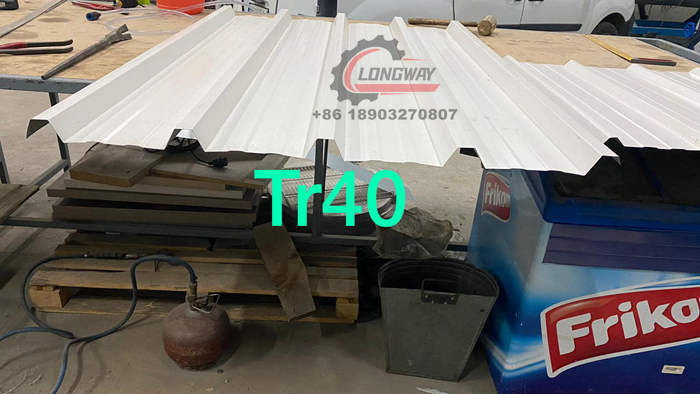roofing sheet making machine
The Advancements in Roofing Sheet Making Machines
In recent years, the construction industry has seen significant advancements in technology, leading to more efficient processes and innovative materials. One such innovation is the roofing sheet making machine, a vital piece of equipment in the production of roofing materials that are not only durable but also cost-effective. This article explores the functionalities, benefits, and advancements in roofing sheet making machines, emphasizing their importance in today's construction landscape.
Understanding Roofing Sheet Making Machines
Roofing sheet making machines are designed to produce various types of roofing sheets, including galvanized sheets, color-coated sheets, and aluminum sheets. These machines utilize high-quality raw materials, transforming them through processes such as roll forming, cutting, and shaping. Typically, the machines consist of a feeding system, roll forming sections, a cutting mechanism, and a control panel.
The process begins with the raw material being fed into the machine, where it passes through a series of rollers that shape it into the desired profile. After the shaping process, the sheets are cut to specific lengths based on the requirements of the construction project. This streamlined manufacturing process ensures that roofing sheets are made quickly and efficiently, ready to meet market demand.
Benefits of Roofing Sheet Making Machines
1. Efficiency and Speed One of the most significant advantages of roofing sheet making machines is their efficiency. The automated processes dramatically reduce the time it takes to produce sheets compared to manual methods. This speed allows manufacturers to meet high demands without compromising quality.
2. Cost-Effectiveness Investing in a roofing sheet making machine can significantly lower production costs over time. The automation reduces labor costs and minimizes material waste, leading to higher profit margins for manufacturers.
roofing sheet making machine

3. Versatility Modern roofing sheet making machines can produce a wide variety of sheet types and sizes. Manufacturers can easily adjust the settings to create different profiles, catering to diverse market needs without the necessity to invest in multiple machines.
4. Quality Control These machines are equipped with advanced technology that ensures consistency in quality. With precise control over the production process, manufacturers can maintain strict quality standards, resulting in roofing sheets that meet safety regulations and durability requirements.
5. Environmental Impact Many roofing sheet making machines are designed with eco-friendliness in mind. They use materials that have a lower environmental impact, such as recyclable metals and energy-efficient systems. This innovation aligns with global initiatives to create sustainable building materials.
Technological Advancements
Advancements in technology have further enhanced the capabilities of roofing sheet making machines. For instance, the integration of smart technology allows for real-time monitoring and adjustments during production. This feature not only enhances efficiency but also reduces the likelihood of defects and downtime.
Additionally, the use of computer numerical control (CNC) systems enhances precision in cutting and shaping processes. These innovations ensure that manufacturers can produce roofing sheets that fit perfectly, further reducing waste and improving construction efficiency.
Conclusion
As the demand for efficient and high-quality construction materials continues to rise, roofing sheet making machines have become an indispensable asset in the industry. Their ability to automate the production process, reduce costs, and maintain high-quality standards makes them vital for manufacturers striving to meet modern construction demands. With ongoing technological advancements, the future of roofing sheet production looks promising. Manufacturers are encouraged to invest in these innovative machines to remain competitive in a rapidly evolving marketplace.
-
Roof Panel Machines: Buying Guide, Types, and PricingNewsJul.04, 2025
-
Purlin Machines: Types, Features, and Pricing GuideNewsJul.04, 2025
-
Metal Embossing Machines: Types, Applications, and Buying GuideNewsJul.04, 2025
-
Gutter Machines: Features, Types, and Cost BreakdownNewsJul.04, 2025
-
Cut to Length Line: Overview, Equipment, and Buying GuideNewsJul.04, 2025
-
Auto Stacker: Features, Applications, and Cost BreakdownNewsJul.04, 2025
-
Top Drywall Profile Machine Models for SaleNewsJun.05, 2025








